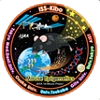This is an archive of information released in the past.
Disclaimer: It may contain broken links or outdated information. Some parts may not function in current web browsers.
*Visit https://humans-in-space.jaxa.jp/en/ for the latest information.

Experiment
- News
- Kibo Utilization Strategy
- Kibo Utilization Plan
- List of JAXA's Utilization Themes
- Experiment Facilities
- Space Environment Utilization
- Archive
Rapid decrease in the amount of bones and muscles as a result of a long-term rearing for 35 days --A flash report of on-ground analysis of space mice

University of Tsukuba
Tokyo Medical and Dental University
A mission to rear small animals in the Kibo module successfully completed the simultaneous rearing of mice under artificial (1G) and microgravity (μG) environments. An analysis of these space mice revealed notable differences in the amount of muscles between mice reared under 1G and μG environments. One of the features of the Kibo module is the experimental environment that enables simultaneous comparison under the same conditions except the level of gravity; consequently, we can expect the discovery of epigenetic alterations caused by the level of gravity.
【Overview of the space experiment】
The Japan Aerospace Exploration Agency (JAXA) and the University of Tsukuba reared mice for 35 days (from July to August 2016) using the Cell Biology Experiment Facility (CBEF) with an exclusive centrifuge function in the Japanese Experiment Module ("Kibo") of the International Space Station (ISS).
Each mouse was housed in an individual cage and six mice each were reared under two different gravity environments: artificial gravity (1G) and microgravity (μG).

Figure 1. Rearing environment in Kibo
【Flash analysis report】
As a result of examination, the amounts of bones and muscles of mice reared in each environment showed significant differences.
(1) Changes in bone tissues (analysis by Tokyo Medical and Dental University)
The team analyzed femur tissues, parts that are strongly affected by dynamic loads, of the returned mice by using micro CT and found that cancellous bones* in the femur had dramatically decreased among mice reared in the μG environment compared with those reared in the 1G environment.
*Bone consists of a hard part called cortical bone in the outer part, and a mesh-like part called cancellous (spongy) bone inside the bone. Cancellous bones metabolize more actively than cortical bones.
Structural analysis of cancellous bones and examination of the bone mineral content revealed a decrease in the number of trabecular bones and in the amount of bone mineral in the cancellous bones, indicating that severe osteoporosis had occurred.
Decreases in bone mass are known to be caused by a long-term stay in space, but the mechanism for such loss has hardly been elucidated. In the future, we will clarify the gene expressions and epigenetic changes of cells responsible for bone metabolism, in order to elucidate the molecular mechanisms of bone loss induced by microgravity.

Figure 2. Changes in bone composition of mice reared in Kibo (Credit:JAXA/University of Tsukuba/Tokyo Medical and Dental University)
(2) Changes in muscles (analysis by the University of Tsukuba)
The change in weight of the soleus muscle (a skeletal muscle in the calf), one of the antigravity muscles, showed that the muscle weight of mice reared in the μG environment was reduced by 10% compared with the mice reared in the 1G environment.


Figure 3. Change in muscle weight of the returned mice (left) and their gene analysis (right)(Credit:JAXA/University of Tsukuba/Tokyo Medical and Dental University)
In comprehensive genetic analysis using a next-generation sequencer, gene expression was also altered in 300 genes out of approximately 40,000 genes in mice reared under microgravity. (In the panel on the right, colors from black → red → yellow → green clearly show expression levels from low to higher expression.) Although this analysis was only a preliminary analysis, muscle atrophy has occurred in antigravity muscles developed to counteract gravity. Rearing in space was conducted in the past for a comparison with rearing on the ground, however, this experiment only enabled a comparison of the difference in gravity levels. The soleus muscle is one of the muscles whose function declines the longer you stay in space. We will examine whether the changes in gene expression observed this time were caused by the epigenetic changes*2 resulting from adaptation to a given environment.
*2Epigenetic changes direct the function of genes without changing the DNA base sequence, and are caused by acquired environmental factors.
*All times are Japan Standard Time (JST)
| Copyright 2007 Japan Aerospace Exploration Agency | Site Policy |